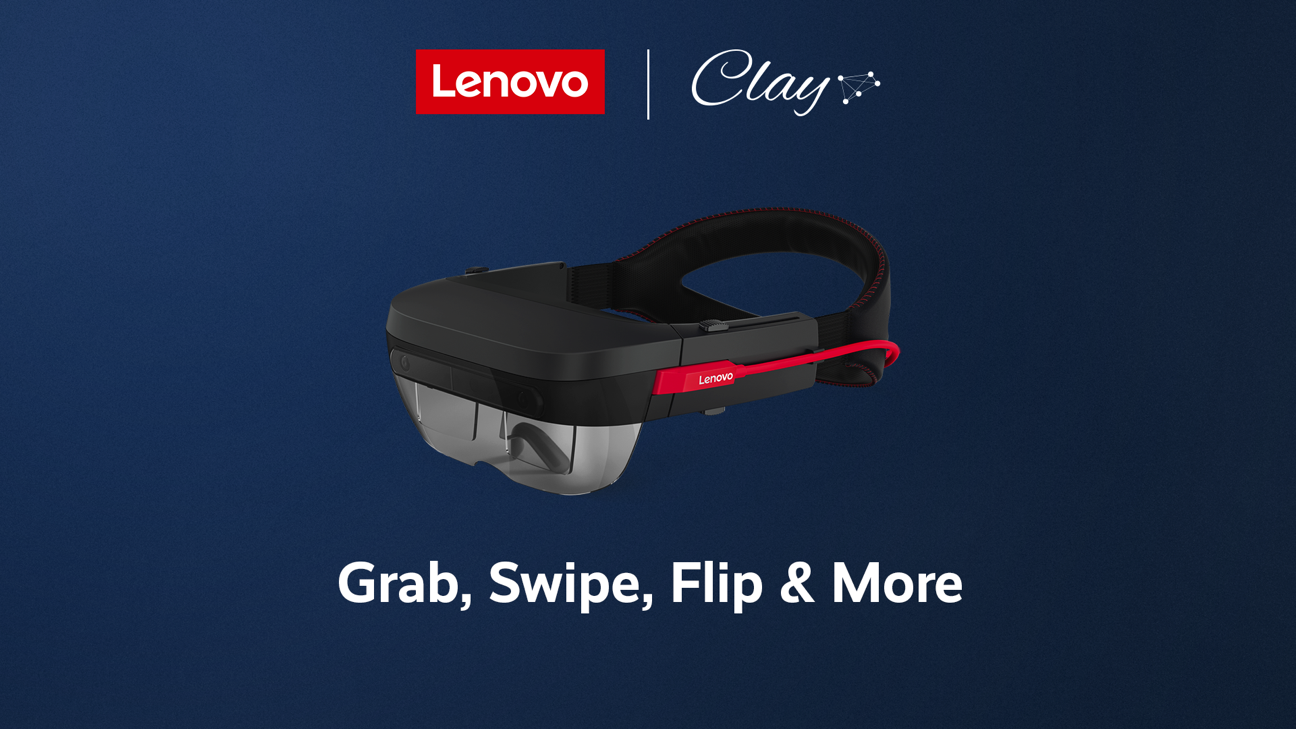
Clay AIR Band Tracking and Gesture Recognition to Lenovo™ ThinkReality™ A6 Headset
Clay AIR‘s collaboration with Lenovo brings native gesture recognition to Lenovo’s ThinkReality A6 augmented reality (AR) headset.
Clay AIR hand tracking and gesture recognition is essential in AR/VR devices:
- It creates an intuitive experience through natural interactions with virtual interfaces.
- Users can use their hands to navigate native and core Operating System functions.
- Gestures supported in Lenovo ThinkReality A6 will include Grab, Swipe, Flip and Pinch among others, and are available to the developer community.
“AR will empower a range of new user interfaces by connecting people and computers in real-time, hands-free scenarios,” said Jon Pershke, Vice President of Strategy and Emerging Business in Intelligent Devices Group, Lenovo.
“Clay AIR’s features embedded in the ThinkReality A6 help create a more immersive user experience by allowing users to directly interact with digital assets. Practical applications include facilitating remote assistance for Lenovo’s customers in the manufacturing and industrial sectors.”
About the ThinkReality A6
- Lenovo unveiled the ThinkReality A6 in May 2019.
- As the first device in the ThinkReality solutions portfolio, the A6 is a lightweight, heads-up, hands-free mobile head-worn device designed for enterprises.
- It can be used to deploy simple and complex AR solutions for enterprises looking to enhance the productivity of their workforce.
- With a weight of 380g (0.83lbs) and a 40-degree diagonal field of view with 1080p resolution per eye, the Lenovo ThinkReality A6 is one of the lightest fully-featured AR headsets in its class.
Clay AIR benefits
Because Clay AIR is a hardware-agnostic solution, the two companies collaborated to bring gestures to Lenovo’s ThinkReality A6 without adding any extra hardware, embedding the solution in the headset’s ToF camera.
More About Clay AIR
Clay AIR’s technology unleashes the potential to access advanced features such as virtual object manipulation and interaction, while still ensuring low power consumption.
It can be implemented into any device with a camera without the need for additional hardware, enabling mixed reality companies to leverage existing wide field of view cameras used for other functions to integrate hand tracking at a lower cost.
Qualcomm and Nreal also partnered with Clay AIR.

